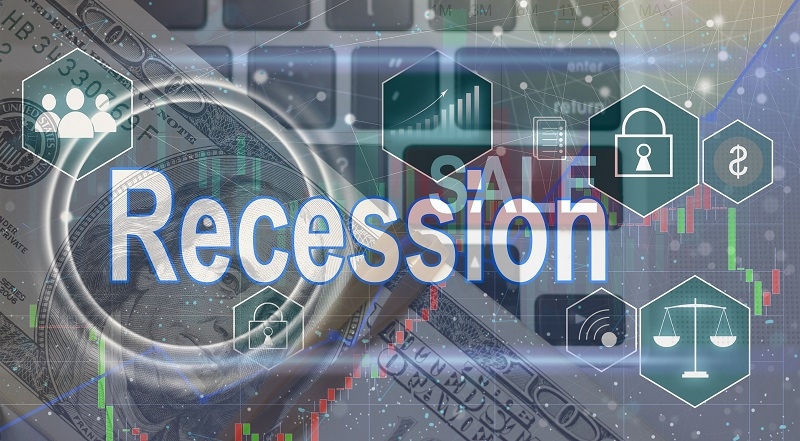
Recessions are uncomfortable, often associated with declining GDP, increasing unemployment, and falling stock prices. However, history tells a powerful story—history indicates that in the short run, there is pain, but in the long run, there has been consistent long-term U.S. market resilience. This article will discuss what past recessions can tell us about U.S. market resilience, how economies recover from failure, the emergence of patterns, and the confidence of investors eventually returning. We will also discuss lessons from a recession market, examples of market rebounds, and examples of recession-resistant industries that are consistently doing well during economic downturns.
First, a recession is often considered two consecutive quarters of negative GDP growth. Recessions are more than numbers—they involve real feelings, fears, uncertainties, and shifts in consumer and business behavior.
Market corrections are often associated with recessions, but they are not lasting. As the economy cycles, the market moves in cycles—expansion, peak, contraction (recession), and recovery. The past may have had different impacts of recessions on the market, but the general takeaway is this: downturns do not last.
No discussion of recession history would be complete without mentioning the Great Depression. The Great Depression was caused by the 1929 stock market crash, which led to monumental unemployment and a 90% decline in stock prices at the low point of the crisis. However, the fallout from the Great Depression allowed for a transformation of the current financial system. Entities such as the FDIC and Social Security emerged, and investor confidence returned thanks to the creation of financial regulations.
The key takeaways about market recessions during this time include
This dark period showed us that while collapse is possible, recovery is possible with the appropriate and joint response from the government and the market.
After World War II, the U.S. economy slowed because of reduced military spending and inflationary fears. However, the slowdown was short-lived and mild.
Examples of the market bouncing back include the rapid industrial transition from military to consumer goods and the baby boom that stimulated demand.
Key lessons:
The 1973–75 recession was spurred by oil shocks, inflation, and stagnant growth—an uncommon mix known as stagflation.
During this time, traditional monetary tools were less effective, yet the market still found a way to correct itself.
Historical recession impact from the 1970s emphasized:
Despite inflation and sluggish growth, U.S. markets eventually stabilized and slowly climbed upward.
To curb runaway inflation from the late '70s, the Federal Reserve hiked interest rates, triggering a short but sharp recession. The Dow dipped but quickly rebounded once inflation was under control.
Economic recovery trends from this period include
U.S. resilience in downturns was evident in how quickly the economy responded to disciplined policy actions.
In the late 1990s, excessive optimism in tech stocks fueled unsustainable valuations. When reality caught up, the market tumbled. NASDAQ lost nearly 80% of its value.
Still, this recession laid the groundwork for future tech giants. While many companies folded, others, like Amazon and Google (then new), used the period to build strong foundations.
Recession market lessons from the dot-com bust:
Caused by a housing crisis and massive bank failures, this recession sent shockwaves across global markets. The S&P 500 lost more than half its value from its 2007 peak.
Yet history again showed recovery. By 2013, major indices had regained pre-recession levels, fueled by aggressive monetary policies, bailouts, and rising investor confidence.
U.S. resilience in downturns was exemplified by
Industries such as tech and healthcare recovered faster than others, reinforcing their recession-proof reputations.
Though relatively brief, the COVID-19-triggered recession was historically significant. It was not driven by financial imbalance but by global health and supply chain disruptions.
Markets initially plummeted but recovered quickly thanks to stimulus packages, low interest rates, and digital transformation.
Market bounce-back examples from 2020 include
The key economic recovery trends here involved speed, innovation, and resilience in both policy and markets.

U.S. markets have always recovered over time, no matter how severe the recession. Long-term investing has consistently proven to be a winning strategy.
From the New Deal to modern stimulus checks, government and central bank responses significantly affect the depth and duration of a downturn.
Investors who diversify across sectors, asset types, and geographies tend to weather recessions better.
Recession-proof industries such as utilities, healthcare, consumer staples, and education often remain strong because they meet essential needs.
Recessions often spark transformation—companies become leaner, consumers become savvier, and industries evolve.
The U.S. has several characteristics that promote resilience:
Even when markets crash, the foundational elements of growth—productivity, consumption, and innovation—remain active.
Recessions aren't easy, but they aren't new. The American economy and stock market have proven to be incredibly resilient and have recovered, often stronger than before.
By learning about what past recessions taught us about U.S. market resiliency, investors, businesses, and policymakers would find value in preparing and feeling more confident for future downturns.
The long arc of economic history is bending toward growth, especially for those who endure, adapt, and stay curious.
This content was created by AI